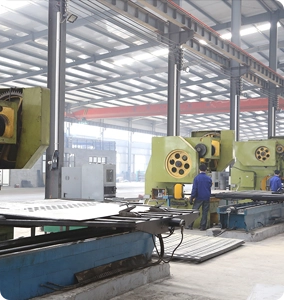Understanding Twisted Bar Grating An Overview
Twisted bar grating is a captivating structural element widely utilized in various engineering applications, particularly in architecture and industrial design. Characterized by its unique geometry and functionality, twisted bar grating is not just a practical solution for flooring and walkways; it also embodies aesthetic appeal.
What is Twisted Bar Grating?
Twisted bar grating consists of metal bars that are twisted or bent in a specific pattern to create an open grating structure. This design allows for various benefits including improved drainage, increased load-bearing capacity, and enhanced visibility. The twisting of the bars adds a visual dynamic that can be appealing in architectural design. The open framework means that debris and liquids can pass through easily, preventing the buildup of materials that could lead to slipping hazards.
Applications in Architecture and Construction
In architectural design, twisted bar grating is often employed in outdoor spaces such as parks, walkways, and terraces. Its durable nature and excellent drainage capabilities make it an ideal choice for situations where water accumulation could be problematic. Moreover, twisted bar grating can be used in bridges and platforms, offering both safety and an innovative design element.
One notable advantage of twisted bar grating is its ability to withstand heavy loads while maintaining structural integrity. The twist in the bars provides enhanced strength this feature is particularly essential in industrial settings, such as factories and warehouses, where heavy machinery and pedestrian traffic are common.
Additionally, the lightweight nature of twisted bar grating allows for easier installation. This can translate into reduced labor costs and quicker project completion. Furthermore, the versatility of materials used in twisted bar grating—ranging from metals such as steel or aluminum to composite materials—means it can be tailored to meet specific environmental requirements and load specifications.
Aesthetic Considerations
twisted bar grating

The aesthetic quality of twisted bar grating cannot be overlooked. The twisting pattern introduces an element of design that merges functionality with beauty. In recent years, architects and designers have increasingly recognized the decorative potential of grating. Twisted bar grating can serve as a focal point in a landscape design or add visual interest to an industrial space.
Moreover, the use of colored or treated metal can further enhance the design’s appeal. When incorporated into a setting that emphasizes natural elements, twisted bar grating can harmonize with its surroundings, creating a seamless integration of infrastructure and environment.
Maintenance and Longevity
In terms of maintenance, twisted bar grating offers several advantages. The open structure minimizes dirt accumulation, making cleaning easier. Periodic inspections are necessary to ensure the integrity of the grating, especially in high-traffic or weight-bearing conditions. Regular maintenance can extend the lifespan of the grating significantly, making it a cost-effective choice in the long run.
If made from corrosion-resistant materials, such as galvanized steel or aluminum, twisted bar grating can last for decades even in harsh environments. This durability makes it an appealing option for outdoor applications, as it can withstand weather-related challenges without compromising safety or structure.
The Future of Twisted Bar Grating
Looking ahead, the future of twisted bar grating appears promising. Advances in construction technology and materials science are likely to yield even stronger and more adaptable designs. Additionally, as sustainability becomes increasingly important in construction and design, twisted bar grating made from recycled materials could provide an eco-friendly option that aligns with modern values.
In conclusion, twisted bar grating stands out as an innovative and multi-faceted structural solution. Its unique combination of practicality, strength, aesthetic versatility, and durability make it a favored choice in both architecture and industrial applications. As trends evolve and new technologies emerge, twisted bar grating will likely continue to adapt and thrive, serving as a testament to the intersection of form and function in design.
-
Why Galvanized Trench Cover Steel Grating Resists Corrosion
NewsJul.10,2025
-
The Versatility and Strength of Stainless Expanded Metal Mesh
NewsJul.10,2025
-
Load Calculations in Steel Grating Platforms
NewsJul.10,2025
-
Keeping Pets and Kids Safe with Chicken Wire Deck Railing
NewsJul.10,2025
-
Hole Diameter and Pitch for Round Perforated Metal Sheets
NewsJul.10,2025
-
Aluminium Diamond Mesh in Modern Architecture
NewsJul.10,2025
Subscribe now!
Stay up to date with the latest on Fry Steeland industry news.

